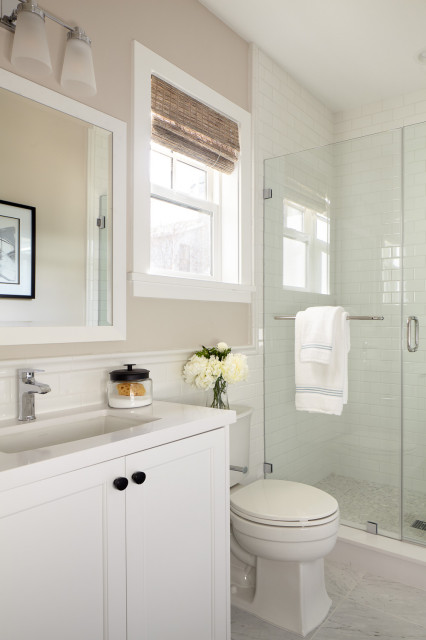


Removal of Existing Fixtures
It’s important to establish before work commences who will be responsible for getting rid of the existing bathroom fixtures, hardware and finishes. If your builder has agreed to take care of this, make sure it’s included in the quote. If it isn’t included, you’ll need to budget for disposing of the items yourself.

Unforeseen Structural Problems
It’s hard to get a handle on the full extent of the work until everything has been stripped out. Depending on the age of your home and its general condition, you might have to spend a lot on fixing or preparing your walls and floor.
For example, once the original floor finishes have been removed, you may find the surface isn’t perfectly even. To level it, your builder will have to lay a special compound or screed, and a change in floor level might even lead to doors having to be adjusted. Unforeseen extras such as these will add to the cost.

Custom Cabinetry
Anything that needs to be custom-made is going to be more expensive than an off-the-shelf version. Unusually shaped shower walls or custom cabinetry, for example, will add to your renovation cost.
Custom-made items may also have a longer lead time, so it’s important to flag this with your builder and subcontractors early on to make sure there are no time delays.

Specialized Finishes
Certain finishes can be harder to install than others. Take mosaics or unusually shaped tiles, for example. They’ll take longer to install and will therefore be more costly. It’s best to have all of your finishes selected and purchased before your builder starts. That way, they’ll be aware of what you’re planning to use and will price for the job accordingly.
Similarly, marble or stone may need specialist detailing at the edges. The best way to finish edges is by having the tiles bevelled. This can be done either on- or off-site. You’ll need to discuss all of this with your tiler in advance as it will have an impact on the price.

Waterproofing
Even if you’re not planning a wet room-style shower, you’ll need to waterproof the walls around a shower or bath. This is an additional cost, so even if you’re only replacing your existing bathroom fixtures, you should factor in your chosen material.

Inadequate Supplies
A common pitfall when renovating a bathroom is not ordering enough tiles. This can cause delays, particularly if the tiles aren’t stock items and have to be ordered.
Calculate the floor and wall areas separately and allow a minimum of 10% extra for wastage. When getting a quote for tiles, make sure the supplier includes grout, adhesive and tile trims, as these can add an unwelcome extra cost once you’ve committed to a particular design.

If you’re planning layout changes to your bathroom, you’ll probably have to relocate lights and possibly light switches and power points, so it’s important you don’t forget the cost of rewiring. If you’re having anything electrical added or changed, you’re going to have to get an electrician in to upgrade the wiring.This might be as simple a change as adding in a new electrical outlet, or as complicated as installing new light fixtures on separate circuits. For example, it works well to have overhead lighting on one circuit and ambient cabinet or wall lighting on another. The cost for this kind of work will depend on the complexity of what’s involved.

Hot Water System
When you’re choosing a hot water system, make sure you understand what you’re getting and where it’s going to be located. Are you going for a continuous-flow system or a storage system that heats and stores hot water?
Most hot water systems make noise, but some are a lot louder than others, so you might want to think about where you’re locating yours. If you’re doing a larger renovation and can decide on where to put your hot water heater, it’s worth locating it away from the bedrooms. All of these decisions will have a bearing on costs.

